I can’t resist cheese. It’s the reason I stopped eating a vegan diet.
There isn’t a single kind I don’t like, from stinky Limburger to fresh mozzarella, and I wouldn’t turn down a bite of any of them even if I was already totally full.
Melted in fondue, sprinkled on a salad, or paired on its own with some wine, I love fromage. I could write an ode to the marvel that is brie.
The way I feel about cheese? That’s how deer feel about tulips. A mouthful of leaves, a bite of the bulb, a nibble of the petals? They love it all.
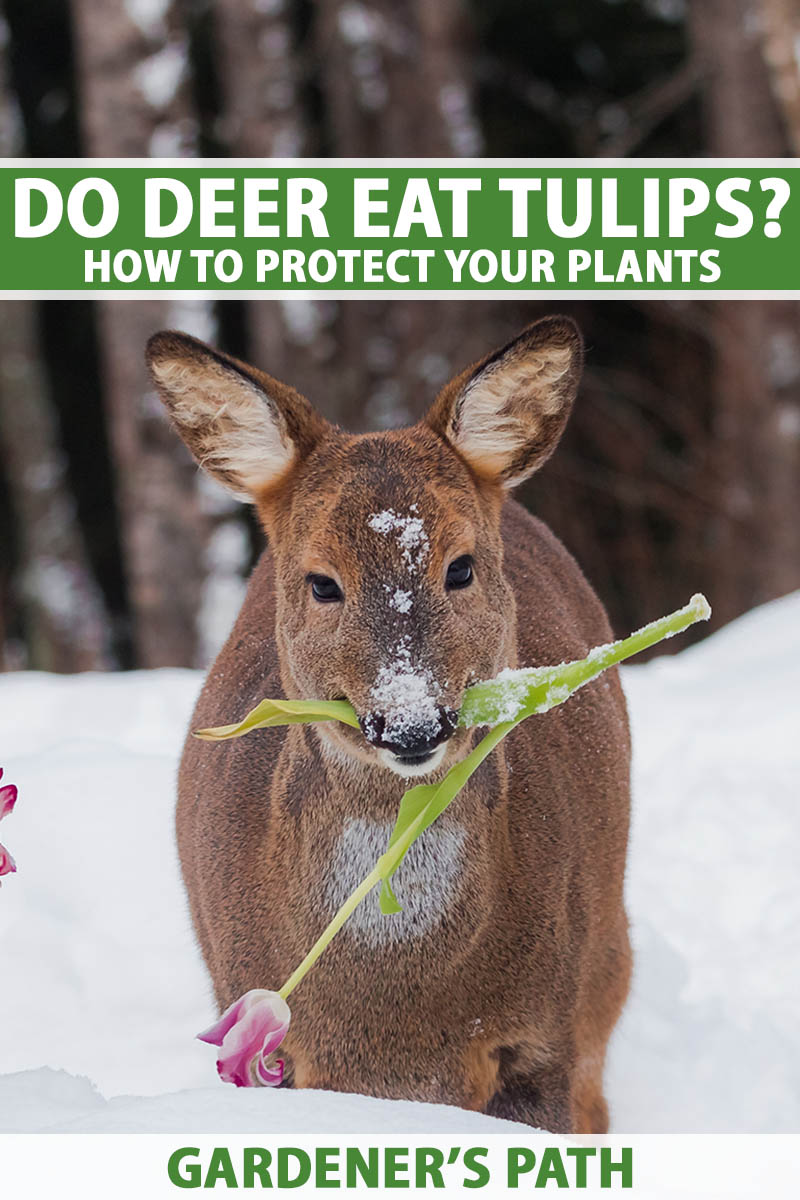
We link to vendors to help you find relevant products. If you buy from one of our links, we may earn a commission.
I imagine sated ungulates snuggled up together in the evening, reminiscing about that time they devoured a field full of bulbs.
I chatted with a professor from the local university’s botany program about how to combine tulips and deer, and her advice, only half-joking, was: don’t. Grow crocuses, daffodils, grape hyacinths, or snowdrops instead.
Of course, those of us in deer-filled areas aren’t going to give up entirely on our tulip dreams. But living with both takes some care, sacrifice, and planning.
Don’t abandon your tulip ambitions. This guide will explain everything you can do to protect your plants, beginning with some things to definitely avoid. Here’s what to expect:
What You’ll Learn
For some general tips on deterring deer, read our comprehensive guide.
I’m not entirely sure that there is a plant out there that a deer won’t at least sample. I’ve watched them browse on cacti. But some plants, like tulips, just seem to be irresistible to ungulates.
That’s why people in deer-heavy areas sometimes just opt to grow other things instead.
If a field full of daffodils isn’t going to cut it for you, keep reading. All hope isn’t lost, but let’s dispel some myths first:
What Won’t Work
I hate to be the bearer of bad news, but companion planting to try and deter deer won’t work.
You could plant a single tulip bulb in the middle of acres and acres of deer-resistant plants like alliums and oregano, and they would march through the plants they hate to find that single bulb.
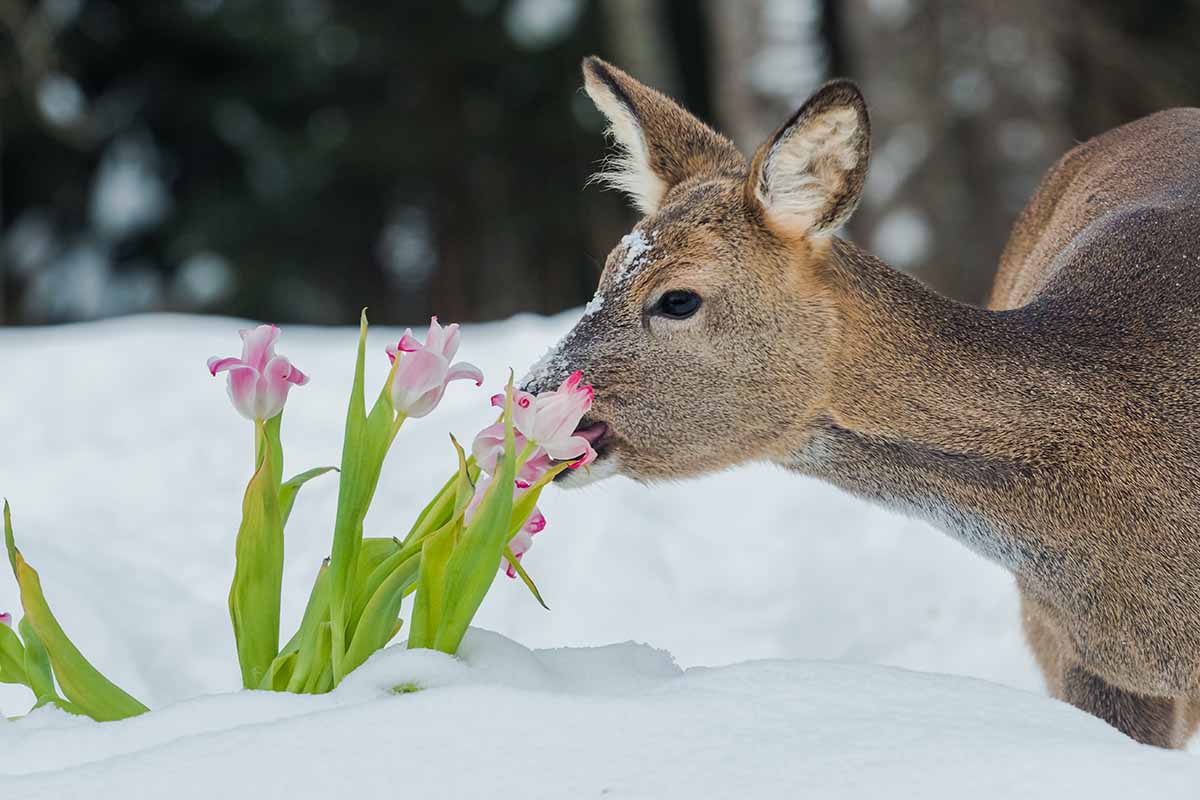
I’m fully convinced that ungulates have a special sensor that starts going off the second a tulip goes into the ground within 1,000 miles.
They start homing in with precision that would out-compete even the most advanced military tracking equipment.
To heck with those little GPS devices you can attach to your keys in case you lose them. Just attach a tulip bulb to your important things and follow the deer to them.
Another common piece of advice is to plant the bulbs extra deep. Yeah, that might help protect a bulb during the winter. But the second a leaf pokes out of the ground… WHOOP WHOOP WHOOP! Off goes that deer alarm.
Finally, you’ve probably heard all the advice about using urine, cayenne pepper, or bars of stinky soap to deter the animals.
You don’t have to take my word for it, but these don’t work as well as commercial preparations to deter our four-legged foes.
The US Department of Agriculture National Wildlife Research Center did a study of coyote urine as a deterrent and found it didn’t help to keep deer away. Human urine is equally ineffective, so abandon that as a deterrent altogether.
Cayenne solutions do work on the plants they’ve been sprayed on, but these lose effectiveness and wash away rapidly.
Strong-smelling soap seems to help a little with low-growing plants, but for high-value species that can be plucked away from a few inches above the ground – like tulips – it’s not effective.
So, what can you do that might actually work? Let’s take a look.
Be Choosy About Location
If you plant your bulbs near the entrances to your home, wildlife will often avoid them. Unless they get really hungry. Then, all bets are off.
Unless you have some sort of extreme weather event, winter is the time when ungulates are the boldest, and that’s not when your tulips are growing.
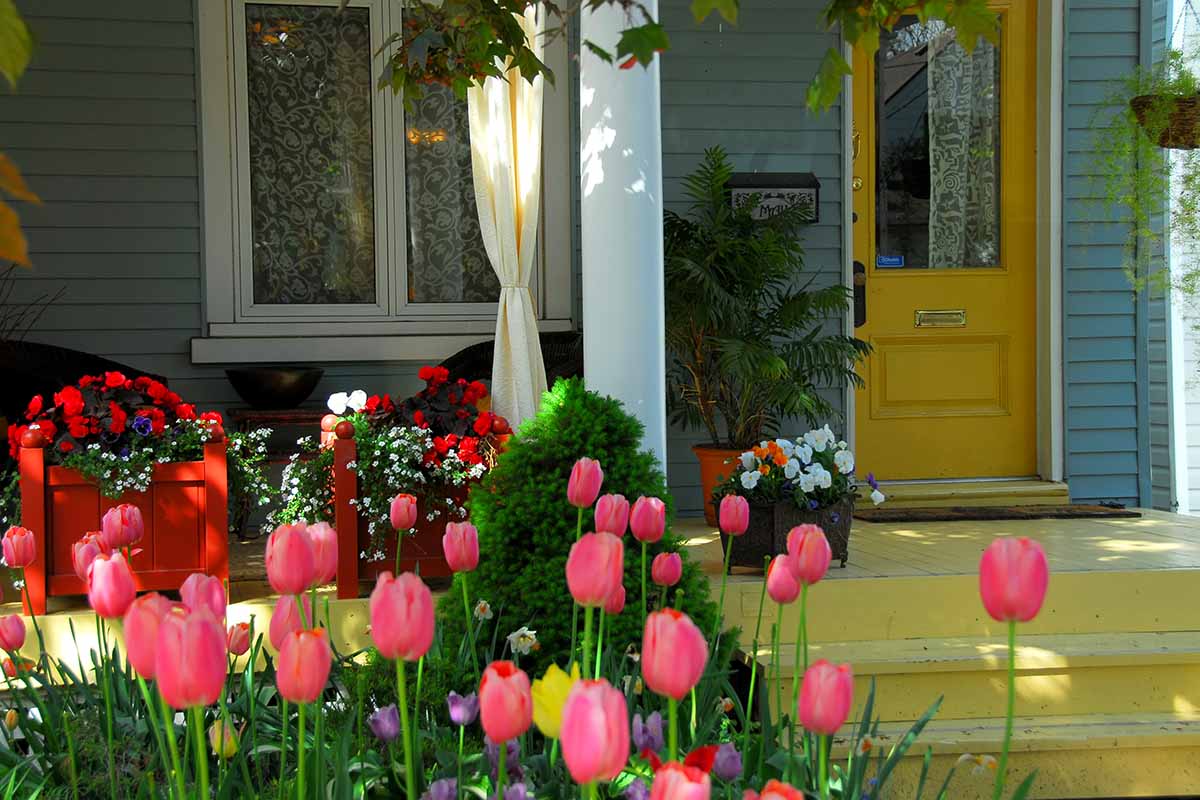
So put your tulips near your house, whether that’s in pots or in a garden bed flanking your doors.
Bonus points if you have a dog that barks every time anything enters your yard. Wind chimes, motion-activated lights, or one of those inflatable tube people might help, too.
Your neighbors might think you’ve lost your mind, but at least you’ll be able to enjoy your fringed favorites.
Build a Cage or Fence
To be absolutely sure that deer won’t enter your garden, you can erect an eight-foot-tall fence all around your garden.
Going 10 feet tall is even better, but eight will do. Deer are capable of jumping about seven feet high, so a tall fence can help keep them away.
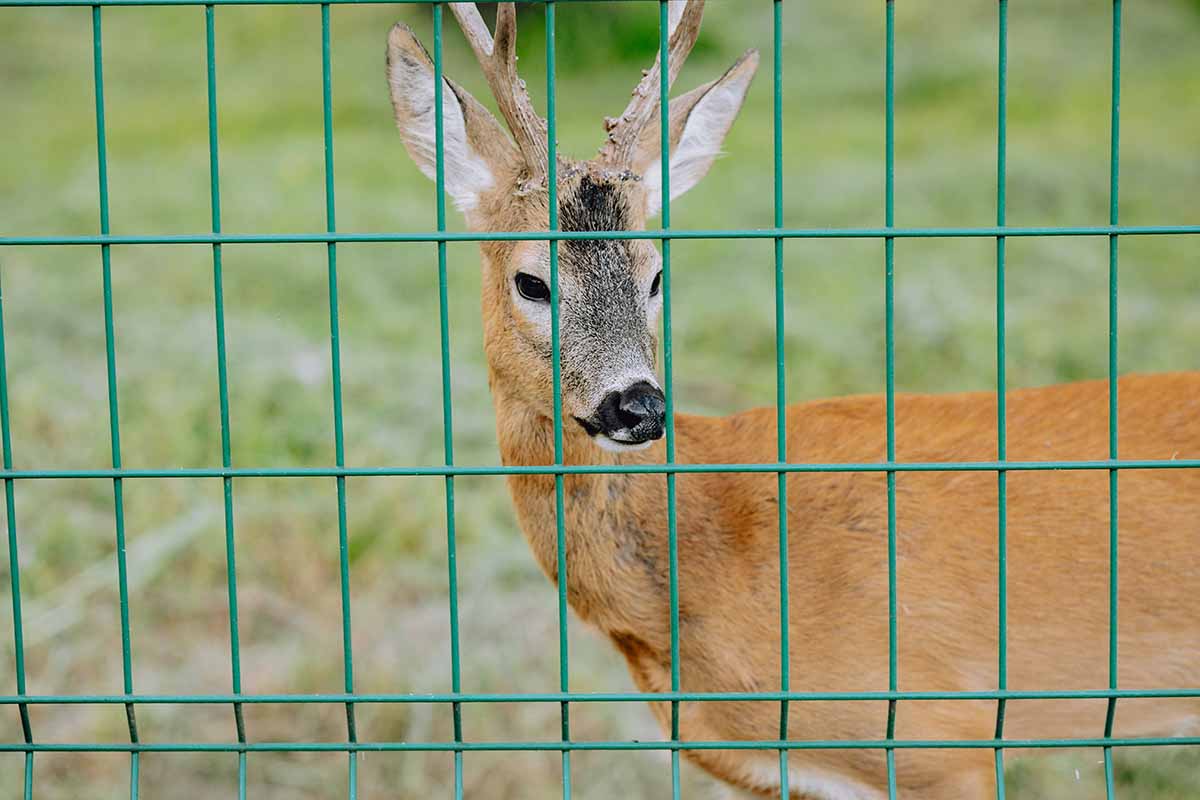
To be honest, though, I wouldn’t be shocked one bit if one day I headed outside and found deer boosting each other over the fence to reach a patch of tulips.
It’s all about finding the right motivation to get you over life’s hurdles.
I understand that building a fence that large just to protect a few square feet of tulips is unlikely, but if you really struggle with those Cervidae species in your yard, it’s worth considering.
If a tall fence isn’t in the cards, you can build a cage over the garden. I’ve seen images of shallow-depth cages that protect the bulbs and the extremely young plants, but the second a leaf emerges from the top of the cage, the deer will pull the plant out.
Deer don’t have teeth on the top front of their jaw, so they don’t cleanly cut through foliage. They grip it and rip it. That means when a bit of leaves are accessible, they’ll grab them and tug them up.
To protect your tulips, the cage has to be large enough to encompass the entire mature plant.
You can use poultry wire bent into a tunnel or fashioned in a square with walls and a top.
Use Deterrents
Some deterrents are more myth than reality, but there are some excellent options out there.
Deer Out has a minty scent that Cervidae species avoid, but it’s safe to use around children and pets.
Plus, it won’t hurt the environment. It’s formulated with garlic oil to help it stick around wherever you spray it, so it won’t vanish within a few days like many homemade remedies will.

I don’t know what kind of magical formula this product has exactly, but it works, even for tulips.
The trick is to spray the leaves as they emerge, then again every week or two as they grow and mature. Spray the flowers, too!
The first year I tried this repellent, it was like night and day compared to the results I’d gotten with other options. I could enjoy my tulips and other high-value plants without worrying.

You can pick up bottles of concentrate in various sizes or a combo pack including a 40-ounce ready-to-spray bottle and 32 ounces of concentrate at Amazon.
Bobbex Deer Repellent also works well, though you shouldn’t use it around edible plants. Amazon carries it in 32-, 64-, 320-, or 640-ounce containers of concentrate.

Motion-activated sprinklers and lights can be helpful, but I find they don’t work effectively on their own and the deer can get used to them quickly.
They’re best in combination with other tactics like planting near your home or using chemical repellents.
I’ve watched a deer stand in the spray of a motion-triggered sprinkler as if it was enjoying the cooling shower.
It took a few weeks for the animal to get comfortable with the spray, so I bet if I moved it every week or two, it might have continued to work.
The same goes for chemical repellents. Some wild animals seem to get used to them, so rotating between different products every few weeks helps.
Tulip Alternatives
If all of the above just seems like too much work, you can plant tulip alternatives instead.

Remember, it won’t help to plant a border or mix in these plants. Ungulates don’t care. They’ll step over the less tasty stuff to reach the good stuff.
Ornamental alliums (Allium spp.) are tried-and-true picks. Not only do deer not find them appealing, but they actively avoid them. They bloom later in the year than tulips, but they’re every bit as beautiful.
Snowdrops (Galanthus spp.) are another excellent option that our hooved friends aren’t interested in. They bloom earlier than tulips and are some of the earliest flowers to emerge in the spring.
Hyacinths (Hyacinthus spp.) and daffodils (Narcissus spp.) are other spring-flowering bulbs that ungulates will ignore.
Ditch the Deer and Enjoy Your Tulips
Deer are always going to seek out tulips, and that’s never going to stop.
Asking the deer to stay away from your tulips is like asking Winnie the Pooh to ignore a delicious pot of honey.
But if you’re determined to have your blossoms even in an area where deer like to visit, there are things you can do.
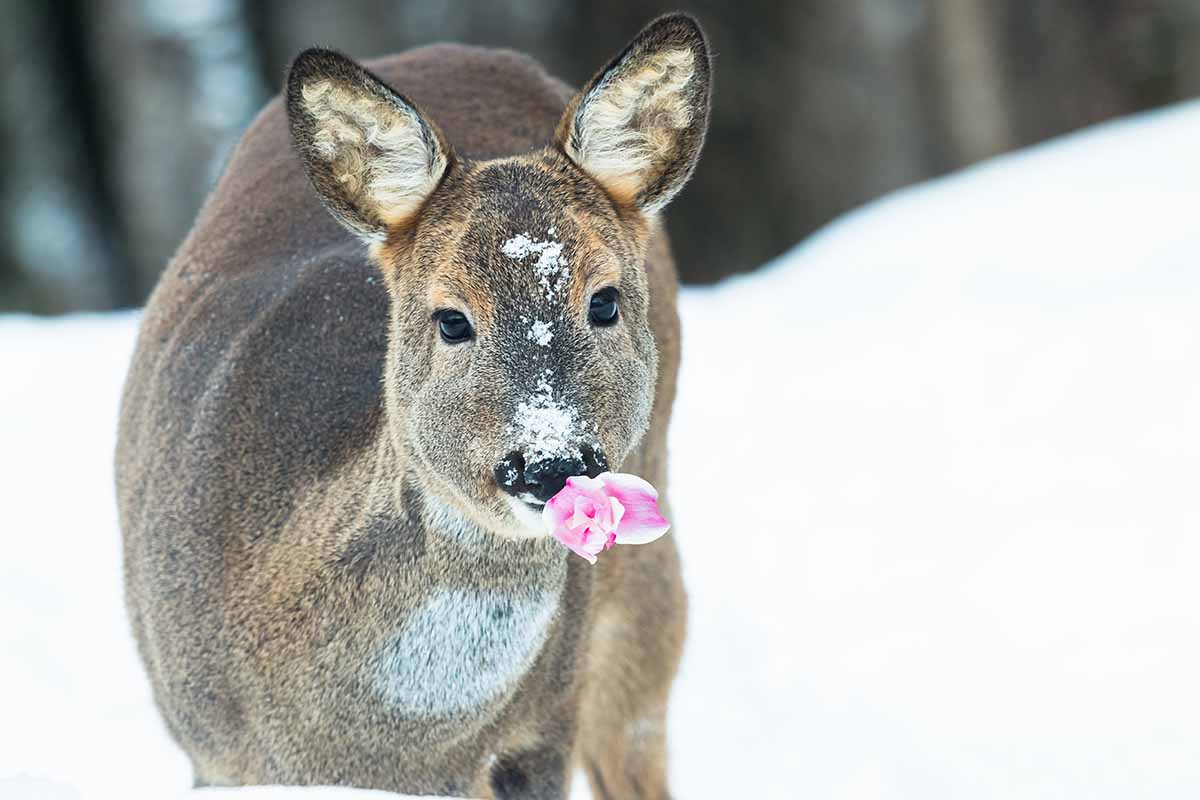
I hope this guide armed you with the knowledge you needed to enjoy a big, beautiful spring show. If so, let us know what tactics work best for you in the comments below.
And for more information about growing tulips in your garden, have a read of these guides next:


